Topics
- Global Cybersecurity Index (GCI)
- G20 Meeting
- Domestic Violence | National Commission for Women
- World Bank and Informal Workers
- Star Link | Global Internet
- Global Cyber security Index (GCI)
#GS2 #Cyber security #Cyber warfare
Context: Recently, India has ranked tenth (10th) in Global Cyber security Index (GCI) 2020 by ITU (International Telecommunication Union) by moving up 37 places.
About:
- The Global Cyber security Index (GCI) is a trusted reference that measures the commitment of countries to cyber security at a global level – to raise awareness of the importance and different dimensions of the issue.
- Each country’s level of development or engagement is assessed along five pillars – (i) Legal Measures, (ii) Technical Measures, (iii) Organizational Measures, (iv) Capacity Development, and (v) Cooperation – and then aggregated into an overall score.
- Based on a multi?stakeholder approach and initiative, the GCI leverages the capacity and expertise of different organizations (see key partners below), with the objectives of improving the quality of the survey, fostering international cooperation, and promoting knowledge exchange on this topic. The ITU Global Cyber security Agenda (GCA)? ?provides the general foundation and framework for the initiative.?
- Method for GCI 2020 (Fourth edition): For each of the pillars – (i) legal, (ii) technical, (iii) organizational, (iv) capacity development, and (v) cooperation – country commitment was assessed through a question-based online survey.
Highlights:
- The US came 1st in the ranking, followed by the United Kingdom and Saudi Arabia tied on the second position together.
- Estonia was ranked third in the index.
- While the Republic of Korea (South Korea), Singapore and Spain scored 98.52 each and shared the fourth position.
- Russia, UAE and Malaysia tied for fifth place with a score of 98.06.
- Lithuania, Japan, Canada and France followed in subsequent positions in the list.
- Among other nations, Turkey (score – 97.49) was ranked 11, Germany (score – 97.41) was ranked 13, China (score – 92.53) ranked 33 and Israel (score – 90.93) was ranked 36.
Results with respect to India:
- India scored a total of 97.5 points out of 100 points, to make it to the tenth position worldwide in the GCI 2020.
- The affirmation by the UN body of India’s efforts on cybersecurity, comes just ahead of the sixth anniversary of Digital India on July 1.
- India has also secured the fourth position in the Asia Pacific region, underlining its commitment to cybersecurity.
- India is emerging as a global IT superpower, asserting its digital sovereignty with firm measures to safeguard data privacy and online rights of citizens.
- The GCI results for India show substantial overall improvement and strengthening under all parameters of the cyber security domain.
International Telecommunication Union:
- Established in 1865, the International Telecommunication Union is the UN’s agency for Information and Communication technologies.
- Its mission is to connect all the people in the world and also to protect and support the right of the people to communicate.
- Originally founded as the International Telegraph Union to promote cooperation among international telegraphy networks of the day, the ITU predates many other standardization bodies and its long and distinguished history contains a number of important ‘firsts’, such as the standardization of the use of the Morse Code and the world’s first radio communication and fixed telecommunication networks.
- ITU has 193 member countries.
- It is headquartered in Geneva, Switzerland.
- It allocates global radio spectrum and satellite orbits, develops the technical standards that ensure networks and technologies seamlessly interconnect, and strives to improve access to ICTs to underserved communities worldwide.
- Recently, India got elected as a member of ITU Council for another 4-year term – from 2019 to 2022. India has remained a regular member since 1952.
Functions of the International Telecommunication Union:
- The ITU consists of 3 sectors, that are: Radio communication (ITU-R); Telecommunication (ITU-T) and Telecommunication Development (ITU-D)
- The major functions of ITU can be listed below:
- Allocates radio spectrums
- Allocation of Satellite orbits
- Develops technical standards for the networks for them to function seamlessly
- Strives to provide access to ICT to underserved communities worldwide
- The ITU also brings out several reports related to telecommunications.
Challenges to Cyber Security in India:
- Cyber terrorism: It is premeditated, politically motivated attack against information, computer systems, computer programs, and data which results in violence.
- Digital Data Threat: Growing online transactions have generated bigger incentives for cybercriminals. Besides, establishments looking to mine data (customer information, results of product surveys, and generic market information), they also create intellectual property that is in itself an attractive target.
- Cyber warfare: It involves the actions by a nation-state or international organization to attack and attempt to damage another nation’s computers or information networks.
- Cyber Infrastructure Concerns: Most equipment and technology systems are vulnerable to cyber threats just like any other connected system. Although the government has set up National Critical Information Infrastructure Protection Centre (NCIIPC), it is yet to identify and implement measures to protect critical information infrastructure.
- Lack of specialists: Globally, India ranks 2nd in terms of the number of Internet users after China (Internet World Stats, 2017). However, India has a negligible base of cyber-security specialists, when compared to internet user base.
- Lack of robust law enforcement mechanisms: India’s approach to cyber security has so far been ad hoc and unsystematic. Despite a number of agencies, policies and initiatives, their implementation has been far from satisfactory.
- Lack of Coordination: Due to the existence of too many agencies with overlapping functions in the field of cyber security, coordination between these agencies is poor.
Efforts to Improve Cyber Security in India:
- Information Act, 2000: The Information Act, 2000 (amended in 2008) is the primary law for dealing with cybercrime and digital commerce in India.
- National Cyber Security Strategy 2020: It is being formulated to improve cyber awareness and cybersecurity through more stringent audits.
- Draft Personal Data Protection Bill, 2018 (based on the recommendation of Justice BN Srikrishna Committee) to secure citizens’ data.
- National Computer Emergency Response Team (CERT-In) functions as the nodal agency for coordination of all cyber security efforts, emergency responses, and crisis management.
- G20 Meeting
#GS2 #International Organisations
Context: Recently, Italy hosted the G-20 foreign ministers’ meeting to discuss the fight against Covid-19 and how to speed up the recovery of the global economy and boost sustainable development in Africa.
- Currently, Italy holds the presidency of G-20. The G-20 summit is scheduled to be held in Italy in October, 2021.
Highlights:
On Covid 19:
- Ministers discussed ways to coordinate the international response to the health emergency.
- They also discussed ways to ensure equitable worldwide access to vaccines and diagnostics.
- Italy highlighted the need for an international response to emergencies that transcend national boundaries because of the Pandemic.
- Germany Criticized China and Russia for engaging in vaccine diplomacy, especially critical of efforts to use the pandemic to “achieve short-term geostrategic advantages.”
- They discussed on promoting a science-based holistic One Health approach.
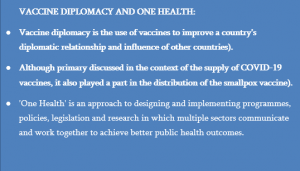
- On Climate Change:
- Increased climate variability and extreme weather events impact agriculture output and are among the forces driving the rise in global hunger.
- To address the climate crisis, US encouraged G-20 members to work together toward ambitious outcomes, including a recognition of the need to keep a 1.5 degree Celsius of warming threshold within reach, the importance of actions this decade that are aligned with that goal and taking other steps like committing to end public finance for overseas unabated coal.
- On Africa:
- The Covid-19 pandemic, conflict, drought, economic woes, and extreme weather are reversing years of progress.
- In the whole of Africa, 250 million people were experiencing hunger, which is nearly 20% of the population (as of 2019).
- On Fight against Islamic State:
- 8 million people have been freed from the militants’ control in Iraq and Syria, but that the threat from IS fighters remains there and in Africa.
- The ministers pledged to maintain a watch against a resurgence of the insurgents.
- The resumption in ISIS “activities and its ability to rebuild its networks and capabilities to target security forces and civilians in areas in Iraq and Syria where the global coalition to fight Islamic State terrorists is not active requires strong vigilance and coordinated action.
- The group “noted with?grave?concern that Daesh/ISIS affiliates and networks in sub-Saharan Africa threaten security and stability, namely in the Sahel region and in East Africa/Mozambique.”
- The coalition said it would work with any country that requested help in fighting ISIS.
(Daesh is the Arabic acronym for Islamic State)
- US announced $436 million in additional humanitarian aid for Syrians and communities in surrounding countries that have been hosting Syrian refugees

- On Syria:
- Ministers called for renewed efforts to bring an end to the decadelong conflict that began in 2011.
- Humanitarian access, in particular the ability for the United Nations to deliver cross-border aid, were among the issues that was highlighted.
- US also expressed its support for an immediate cease-fire in Syria.
- India’s Stand in the meet:
- Flagged the issue of “vaccine equity”.
- This came in the wake of the European Union’s (EU) opposition to India’s and South Africa’s proposal to increase large-scale manufacturing of vaccines by waiving some parts of the intellectual property rules under the Agreement on Trade-Related Aspects of Intellectual Property Rights (TRIPS Agreement).
- These rules prevent international firms with the capacity to produce approved vaccinations owing to issues with licencing.
- Economy needs decentralised globalisation, including in manufacturing, food and health. Resilient supply chains must develop in parallel.
- Many countries, faced difficulties getting medical equipment during the pandemic and faced disruption in many number of areas.
- Vaccine Equity:
- It entails both affordability of vaccines and access opportunities for populations across the world, irrespective of geography and geopolitics.
- As variants continue to spread, even countries with advanced vaccination programs have been forced to reimpose stricter public health measures, and some have implemented travel restrictions.
- Initiative to Ensure Vaccine Equity:
- COVAX: It is a global initiative aimed at equitable access to Covid-19 vaccines led by UNICEF, Gavi (The Vaccine Alliance), the World Health Organization, the Coalition for Epidemic Preparedness and others.
- India also began its ‘Vaccine Maitri’ to supply Covid vaccine to different nations.
About G20:
- The G20 is an informal group of 19 countries and the European Union, with representatives of the International Monetary Fund and the World Bank.
- The G20 membership comprises a mix of the world’s largest advanced and emerging economies, representing about two-thirds of the world’s population, 85% of global gross domestic product, 80% of global investment and over 75% of global trade.
- The work of G20 is divided into two tracks:
- The finance track comprises all meetings with G20 finance ministers and central bank governors and their deputies. Meeting several times throughout the year they focus on monetary and fiscal issues, financial regulations, etc.
- The Sherpa track focuses on broader issues such as political engagement, anti-corruption, development, energy, etc.
- Each G20 country is represented by its Sherpa; who plans, guides, implements, etc. on behalf of the leader of their respective country.
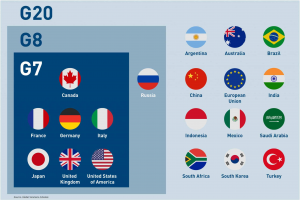
- Domestic Violence | National Commission for Women
#GS1 #Social Empowerment #Women Issues
Context: The National Commission for Women (NCW) recently kick started a project series, ‘Training Programme of Protection Officers in addressing Domestic Violence’ in collaboration with Lal Bahadur Shastri National Academy of Administration (LBSNAA) to address the specific needs of Protection Officers in responding to survivors of domestic violence.
Key Details:
- The training aims to focus on the role of different stakeholders/service providers including police, legal aid services, health system, service providers, shelter services, one stop centres, etc.
- The training will also focus on change of stereotypic mindset and understand the impact of domestic violence on survivors and their children.
About Protection Officers:
- Protection Officers bridge the gap between administration and justice for aggrieved women.
- They help the aggrieved woman in filing complaints and application before the Magistrate to obtain the necessary relief and also assist to obtain medical aid, legal aid, counselling, safe shelter and other required assistance.
- The Protection Officers are appointed by the state government in each district and they shall be women as far as possible.
Under the Protection of Women from Domestic Violence Act, 2005, the duties of the Protection Officers are:
- To assist the Magistrate in the discharge of his functions under this Act;
- to make a domestic incident report to the Magistrate, in such form and in such manner as may be prescribed, upon receipt of a complaint of domestic violence and forward copies thereof to the police officer in charge of the police station within the local limits of whose jurisdiction domestic violence is alleged to have been committed and to the service providers in that area;
- to make an application in such form and in such manner as may be prescribed to the Magistrate, if the aggrieved person so desires, claiming relief for issuance of a protection order;
- to ensure that the aggrieved person is provided legal aid under the Legal Services Authorities Act, 1987 and make available free of cost the prescribed form in which a complaint is to be made;
- to maintain a list of all service providers providing legal aid or counselling, shelter homes and medical facilities in a local area within the jurisdiction of the Magistrate;
- to make available a safe shelter home, if the aggrieved person so requires and forward a copy of his report of having lodged the aggrieved person in a shelter home to the police station and the Magistrate having jurisdiction in the area where the shelter home is situated;
- to get the aggrieved person medically examined, if she has sustained bodily injuries and forward a copy of the medical report to the police station and the Magistrate having jurisdiction in the area where the domestic violence is alleged to have been taken place;
- to ensure that the order for monetary relief under section 20 is complied with and executed, in accordance with the procedure prescribed under the Code of Criminal Procedure, 1973.
Domestic Violence during Pandemic:
- As per the information received from National Legal Services Authority (NALSA) for the period from April 2020 to June 2020, legal aid and assistance has been provided in 2878 domestic violence cases and petition has been filed in 452 cases under the Protection of Women from Domestic Violence Act, 2005 (PWDVA). 694 cases have been resolved through counselling/ mediation.
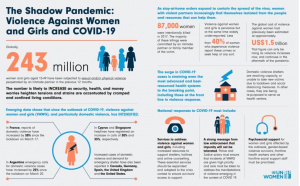
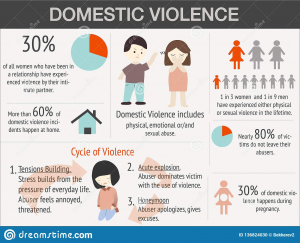
- World Bank and Informal Workers:
#GS2 #International Groupings #GS3 #Inclusive Growth
Context: The World Bank has approved a USD 500 million loan programme to support India’s informal working class to overcome the current pandemic distress.
- The loan will create greater flexibility for states to cope with the ongoing pandemic, future climate and disaster shocks.
Key Details:
World Bank’s Financial Support:
- Of the USD 500 million commitment, USD 112.50 million will be financed by its International Development Association (IDA) and the rest will be a loan from International Bank for Reconstruction and Development (IBRD).
- The loan has a maturity period of 18.5 years including a grace period of five years.
Fundings Since Start of Pandemic:
- World Bank’s total funding towards strengthening India’s social protection programmes to help the poor and vulnerable households since the start of the pandemic stands at USD 1.65 billion (about Rs 12,264.54 crore).
- In 2020, provided immediate emergency relief cash transfers to about 320 million individual bank accounts identified through pre-existing national social protection schemes.
- Also an additional food rations for about 80 crore individuals.
How can this funding help Indian Informal Sector:
- The operation will enhance the capability of states to use resources based on an assessment of local risks and expand the social protection net for underserved urban informal workers while laying the groundwork for a more climate-responsive social protection system.
- States can now access flexible funding from disaster response funds to design and implement appropriate social protection responses.
- The funds will be utilised in social protection programmes for urban informal workers, gig-workers, and migrants.
- Investment in social protection is aimed at building the resilience of economies and livelihoods of communities.
- A National Digital Urban Mission will create a shared digital infrastructure for people living in urban areas through investments at the municipal level to help scale up urban safety nets and social insurance for informal workers.
- It will also include gender-disaggregated information on women workers and female-headed households.
- This will allow policymakers to address gender-based service delivery gaps and effectively reach the unreached, particularly widows, adolescent girls, and tribal women.
- Street vendors are an integral part of India’s urban informal economy. The programme will give street vendors access to affordable working capital loans of up to Rs 10,000.
- Some five million urban street vendors could benefit from the new credit programme.
- Urban Local Bodies (ULBs) will identify them through an IT-based platform
Informal Sector Worker:
- The informal sector is the part of any economy that is neither taxed nor monitored by any form of government.
- The workers who indulge in the informal sector are informal sector workers or informal workers.
- The informal sector provides critical economic opportunities for the poor.
- It is largely characterized by skills gained outside of a formal education, easy entry, a lack of stable employer-employee relationships, and a small scale of operations.
- Unlike the formal economy, the informal sector’s components are not included in GDP computations.
- India’s estimated 450 million informal workers comprise 90% of its total workforce, with 5-10 million workers added annually.
- Star Link | Global Internet
#GS3 #Technology
Context: Space X has announced that it will provide internet nearly worldwide within weeks through Starlink Network.
- Company aims to offer broadband to as much as 5% of the world’s population where conventional fiber and wireless networks can’t reach.
Highlights:
- Starlink Network in Lower Earth Orbit (LEO) aimed at providing low-cost and reliable space-based internet services to the world
- Currently, fibre optic cables or wireless networks through mobile towers provide internet services.
- Starlink is a SpaceX project to build a broadband network with a cluster of orbiting spacecraft that could eventually number thousands.
- The Starlink satellites carry Hall thrusters, which use electricity and krypton gas to generate an impulse, to manoeuvre in orbit, maintain altitude and guide the spacecraft back into the atmosphere at the end of their mission.
- The Starlink network is one of several ongoing efforts to start beaming data signals from space.
- Startlink will provide an internet network “everywhere except the poles.
- The cost of project to design, build and deploy constellation was estimated to be at least US$10 billion.
SpaceX’s Capacity:
- SpaceX can launch up to 60 satellites in one go. It aims to deploy 1,584 of 260 kg spacecraft to provide near-global service by late 2021 or 2022.
- It started a private beta service in Northern United States in August 2020 and public beta in October 2020.
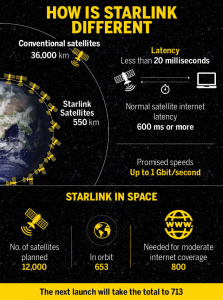
Space Internet with Low Earth Orbit:
- The LEO extends up to 2,000 km above the Earth’s surface.
Advantages of LEO Internet:
- Reduced Latency: The presence of satellite at a lower height from the Earth’s surface, will help to bring the lag down to 20-30 milliseconds, roughly the time it takes for terrestrial systems to transfer data.
- The signals from satellites in space can overcome obstacles faced by fibre-optic cables or wireless networks easily.
- The traditional ways to deliver the internet — fibre-optic cables or wireless networks are not feasible in remote areas or places with difficult terrain.
- Setting up cables or mobile towers in these areas is not viable.
Disadvantages:
- Due to its lower height, its signals cover a relatively small area. As a result, many more satellites are needed in order to reach signals to every part of the planet.
- The satellites in these orbits travel at more than double the speed of satellites in geostationary orbit to balance the effects of gravity. Thus, many more satellites are needed in the network to eliminate breaks in transmission of data.
- It will generate more space debris.
- The constellations of space internet satellites will make it difficult to observe other space objects, and to detect their signals.
- There will be an increased risk of light pollution.
- Light reflected from the man-made satellites can interfere with — and be mistaken for — light coming from other space bodies.
